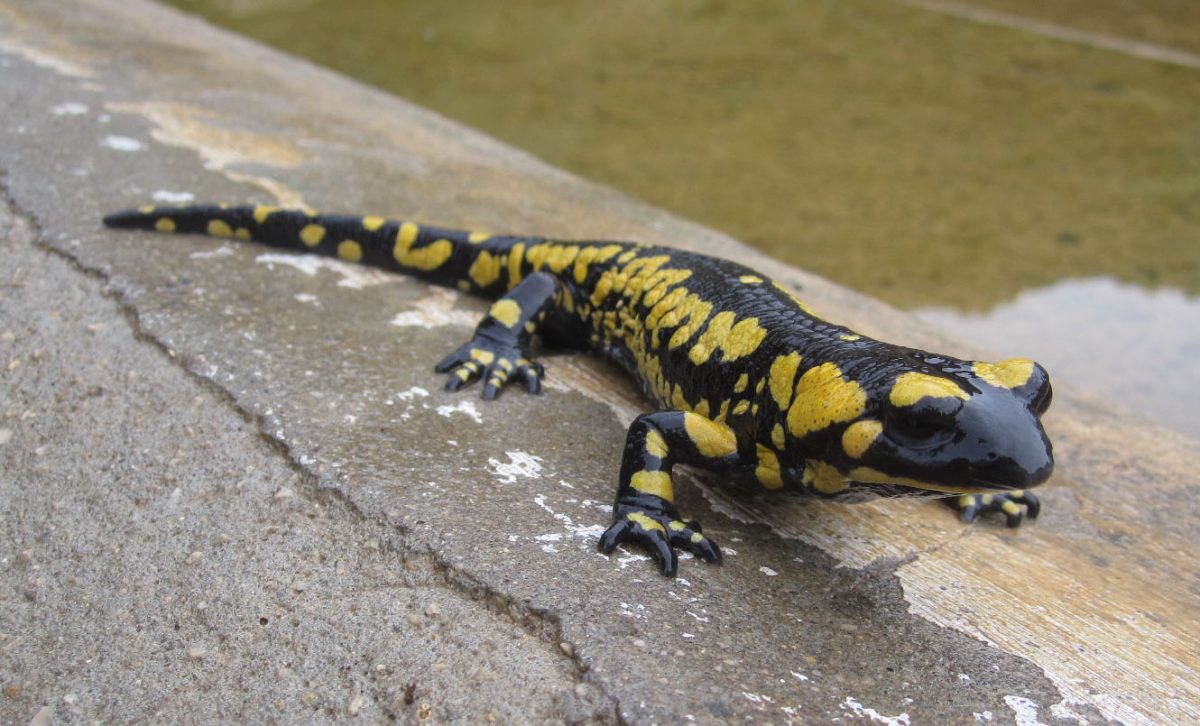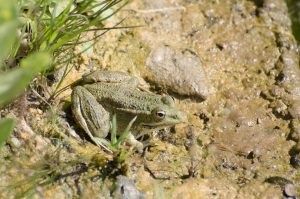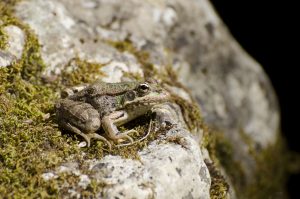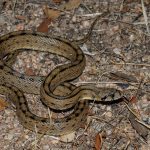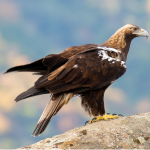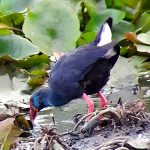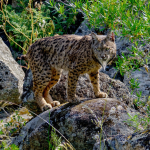My first contacts with amphibians happened in my earliest childhood, when every village child played at catching frogs and tadpoles in ponds and streams in my village. From then on I always liked to observe them on my fishing days, trying to distinguish their species… Although I have to admit that I have had to pull some bibliography for some of them! Here are the main amphibians of Extremadura.
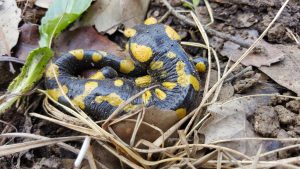
Although they are not the most sought-after vertebrates, Extremadura’s ecosystems are home to an interesting biodiversity of amphibians, due to the enormous quantity and variety of aquatic ecosystems.
Below I present the different species of salamanders, newts, frogs and toads present in the community.
Order Anuros (Amphibians of Extremadura)
Commonly known as frogs and toads, there are nine species:
Common frog Pelophylax perezi
Widely distributed throughout the region, of the amphibians of Extremadura, it is the most common, also in the Iberian Peninsula. We find it in all kinds of ponds, lagoons, rivers and streams. Of medium size, it does not require excessively well preserved waters, hence its capacity to adapt. It is of great ecological importance as it forms part of the diet of many predators ,it presents a very variable coloration, alternating green and brown tones.
Common midwife toad Alytes obstetricans
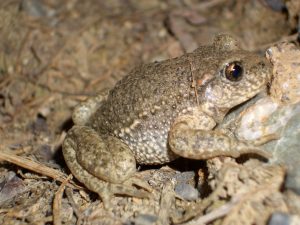
A small toad, it is currently not endangered and can be found throughout most of the Iberian Peninsula, except for Andalusia. It feeds on all types of invertebrates and its habitat is very varied, and it can even be found in urban areas. It is stocky in appearance and has small black, green and reddish spots. More abundant in Cáceres than in Badajoz, its activity is mainly nocturnal or crepuscular.
Common toad Bufo espinosus
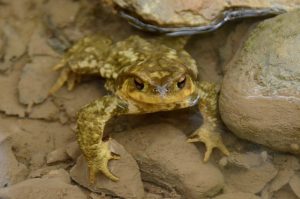
It is the largest toad (can weigh up to 80 grams) that inhabits the peninsula and its state of conservation is good because it survives well in all types of waters, even those of lower quality. We can find it in all kinds of grasslands, with very terrestrial habits, it prefers to reproduce in deep and stable water masses.
Iberian midwife toad Alytes cisternasii
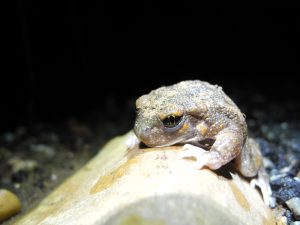
It is a small toad, less than 5 cm, and we can find it mainly in the southern half of Cáceres and in the east of Badajoz, almost always associated with pastures and meadows of oaks and cork oaks. It is an endemic species of the Iberian Peninsula and is catalogued as “almost threatened”.
Iberian painted frog Discoglossus galganoi
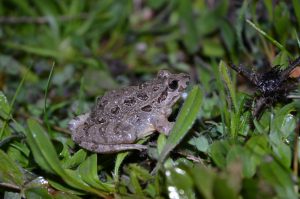
A little bigger than the previous ones, it can measure up to 7 cm. Although it is abundant in the whole community, a good place to see it is the surroundings of the Monfragüe National Park. It always lives in areas of high humidity, normally in grasslands with a lot of herbaceous cover, near rivers and streams.
Iberian speckled toad Pelodytes ibéricus
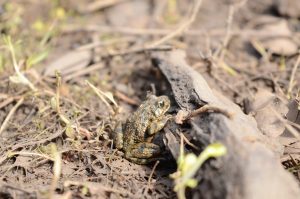
Present in central and southern Extremadura, it is endemic to the Iberian Peninsula, although it has its main populations in southwestern Andalusia. It’s a small toad, less than 4,5 cm. It lives in open areas, with little vegetation making their placements in temporary pools and small streams.
Long legged frog Rana iberica
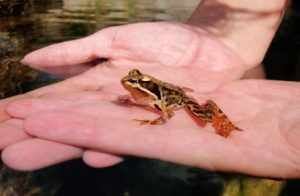
It is a small frog that usually lives in streams and small mountain rivers of clear water. Their main food is insects and spiders. In Extremadura it is present in the north and east of the province of Cáceres. It differs from other similar frogs (brown and red) in that it has more developed hind legs.
Running frog Epidalea calamita
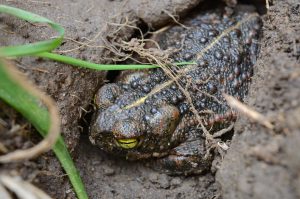
This toad is also widely distributed and is smaller than Bufo bufo, although larger than most other toads. It has a nocturnal habit and usually spends its days underground or under a rock. This toad has the peculiarity that it does not jump, it moves with a kind of trot or run that gives it its name. It abounds throughout the community.
Spurred toad Pelobates cultripes
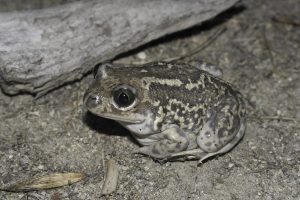
It is not yet threatened but its populations are suffering a major regression, as are most anurans due to habitat loss. This toad also inhabits grasslands with minimal moisture. It likes to breed in cattle ponds from February onwards, where we can easily observe them. The rest of the year is difficult because it spends a lot of time underground.
St. Anthony’s frog Hyla arborea
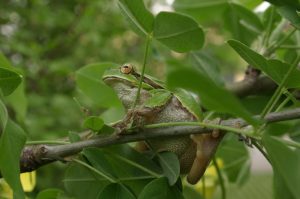
Small-sized frog with smooth skin, likes to climb reeds and small trees in wet areas. This frog has the ability to attach itself to vegetation with its legs, being able to climb trees several meters high. It concentrates its activity at night, sunrise and sunset. It is distributed throughout the region and is not particularly threatened.
Mediterranean tree frog Hyla meridionalis
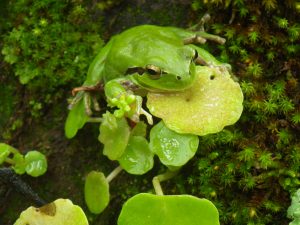
Less than 5 cm in size,it’s a climbing frog very similar to Hyla arborea. It differs from Hyla arborea in that the dark side strip is only present on the face, not on the sides of the body. It is abundant in Extremadura and is active from dusk until morning, remaining hidden during the central hours of the day.
Order Caudados (Amphibians of Extremadura)
Unlike frogs and toads, they are amphibians that possess tails and are commonly like salamanders and newts, we can highlight the following species:
Common salamander Salamandra salamandra
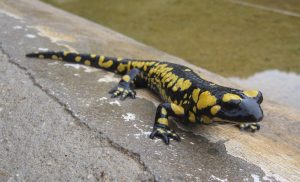
Of medium size, it stands out for its very showy and striking colours. Of terrestrial habits, it only enters the water to reproduce. It can be found in deciduous forests and bordering biotopes, provided there are nearby streams. It is more abundant in the province of Cáceres, especially in the south and southeast.
Iberian newt Lissotriton boscai
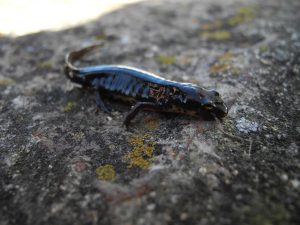
A small-sized newt, we usually find it at the headwaters of rivers where the waters are clearer, although it can also inhabit seasonal lagoons. Most of its activity takes place in the aquatic environment, both at night and during the day. It is distributed throughout the community and feeds on small invertebrates.
Iberian ribbed newt Pleurodeles waltl
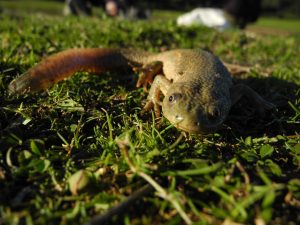
It is the largest amphibian in Extremadura (up to 30 cm) that we can observe in the community, is very common in ponds, lagoons, streams and all kinds of waters with little current. It feeds on invertebrates associated with the river environment and is more abundant in the province of Cáceres and east of Badajoz.
Marbled newt Triturus marmoratus
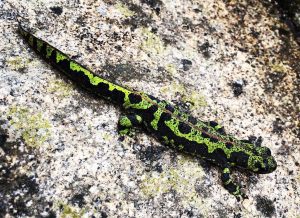
Of medium size (the adult measures between 11 and 16 cm), this species can only be found in the north of the province of Cáceres. It mainly inhabits stagnant waters: lakes, ponds, watering holes, pools of small streams… But above all, whenever there is abundant aquatic vegetation. Like other newts, it feeds on small invertebrates and is currently not endangered.
Pygmy newt Triturus pygmaeus
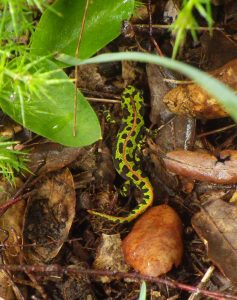
Small-sized Urodelo (up to 12 cm) also present in rivers, streams, ponds, marshes… we can even find it in irrigated fields. It looks a lot like the marbled newt although this one is a little bigger. It likes stagnant waters or with little current in which it feeds on small invertebrates. Most of the population is in Cáceres, in the south of the province, although we can also find it in Badajoz.
Thanks to Seila López and Alvaro de las Heras for the photographic material.

